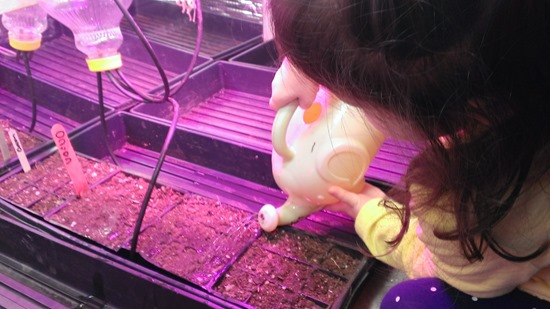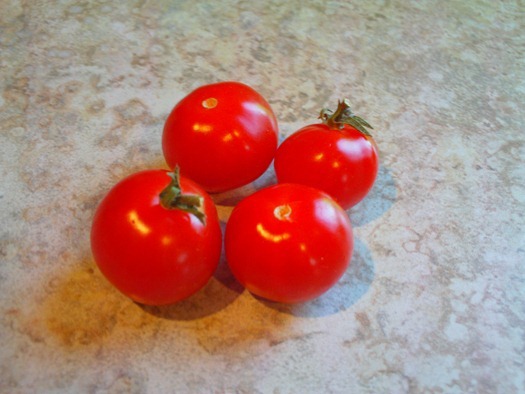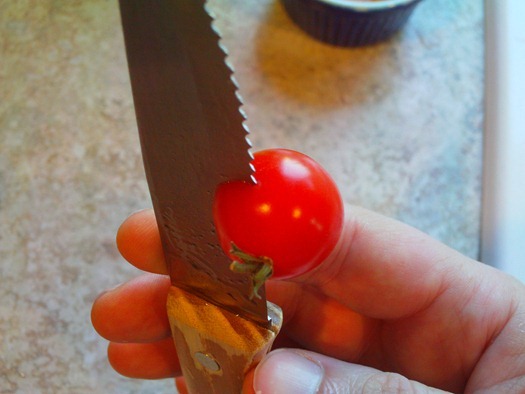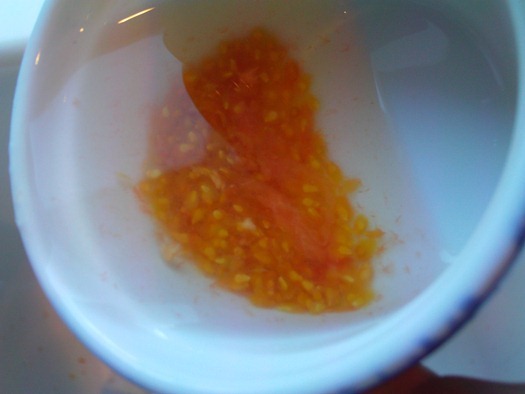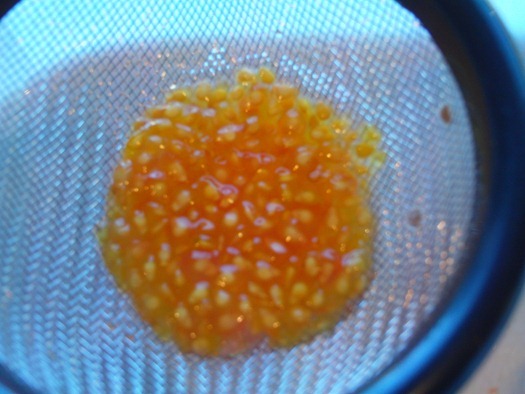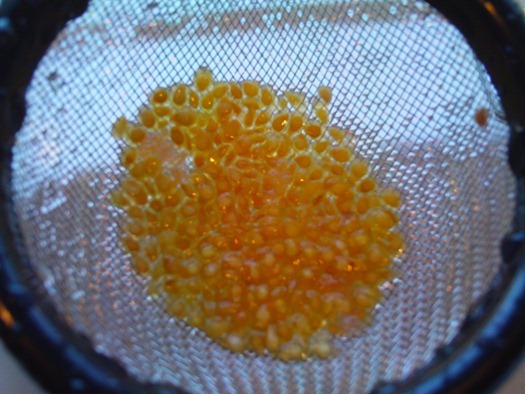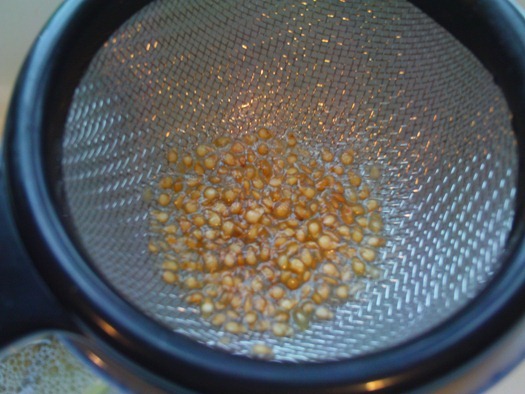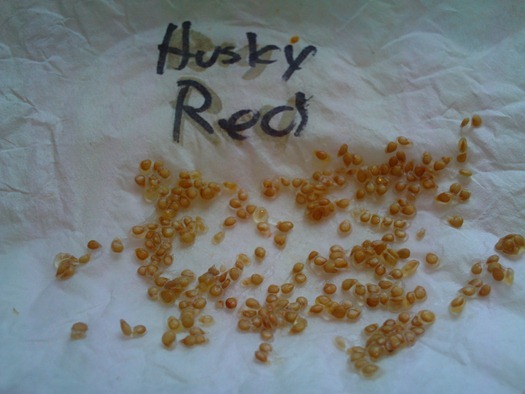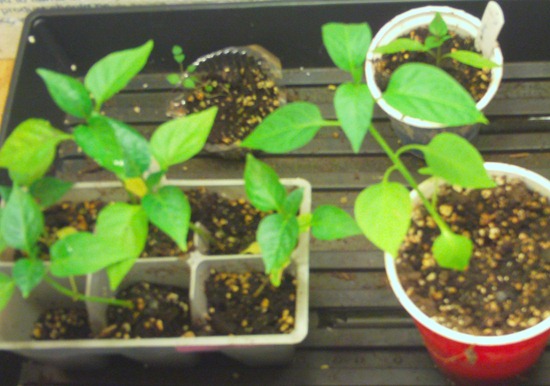When to start garden seeds indoors: Seed starting calculator
8.2 years ago cheap, indoor growbox, indoor seed starting, seedling, seeds

When you start seeds indoors in a vegetable garden, it can be difficult getting your schedule down to ensure that start your vegetable seeds with enough lead time that they are mature enough to venture outside but also not so large they take over your growing area.
Personally this has been a difficult part for me where I am really good getting the early vegetables started on time (onions, peppers, tomatoes) but when it comes to the later plants and/or second/third plantings is where I begin to get forgetful. Over the years I have come across a couple of great tools to make this easier that I thought I would share.
No matter which option you choose to start garden seeds indoors you will need to determine an important date, your last frost date. There are many sites/tables out there that will give an estimate I actually have a couple posts on the subject but at the moment my favorite site that makes this very easy is WeatherSpark, it uses historical data with great visuals to easily determine when the best probability of picking the right date. Here you can take a look at this historical data and make your call of what date you think will be safe.
1. Create a garden schedule. Just by figuring out your last frost date and doing a little math (Excel works great for this) you can determine the optimal seed starting dates and even get a general idea of when your plants should be ready for transplanting. What I love about this technique is you can tweak it each year as things worked well (or not so well) in previous years to get the schedule finely tuned to your particular garden and the micro-climates within it.
In addition knowing an estimate of when these plants will be venturing out in the wild can assist in your space planning for your seeding area as well as having a reality check if you see your peppers will be ready to be transplanted in March when it doesn’t get above freezing until mid-June.
Here is my schedule for starting seeds indoors my area and estimated last frost date (April 20th), though sure everyone that is reading this will not have the same date as mine so thanks to my infinite nerdiness I made the following table so you can adjust the “Last Frost Date” to yours and see how my schedule would look in your area.
| Last Frost Date: |
| Vegetable Name | Seed Start Date | Estimated Transplant Date |
Estimated Harvest Date |
| Celery | 1/19/2013 | 3/18/2013 | 4/24/2013 |
| Onion | 1/19/2013 | 3/25/2013 | 5/24/2013 |
| Leeks | 1/19/2013 | 3/21/2013 | 6/3/2013 |
| Kale | 1/26/2013 | 3/7/2013 | 3/22/2013 |
| Artichoke | 1/31/2013 | 4/27/2013 | 6/20/2013 |
| Kohlrabi | 2/9/2013 | 3/15/2013 | 4/5/2013 |
| Pak Choi | 2/9/2013 | 3/6/2013 | 4/10/2013 |
| Parsley | 2/8/2013 | 4/6/2013 | 4/24/2013 |
| Lettuce | 2/9/2013 | 3/6/2013 | 4/5/2013 |
| Broccoli | 2/9/2013 | 3/15/2013 | 4/20/2013 |
| Pepper – Jalapeno | 2/9/2013 | 4/28/2013 | 4/25/2013 |
| Pepper – Bell | 2/9/2013 | 5/4/2013 | 4/25/2013 |
| Swiss Chard | 2/16/2013 | 3/20/2013 | 4/7/2013 |
| Cabbage | 2/16/2013 | 3/31/2013 | 5/7/2013 |
| Brussel Sprouts | 2/22/2013 | 3/31/2013 | 5/23/2013 |
| Collards | 3/2/2013 | 3/24/2013 | 5/1/2013 |
| Tomato | 3/2/2013 | 5/4/2013 | 5/21/2013 |
| Spinach | 3/9/2013 | 4/23/2013 | |
| Peas | 3/9/2013 | 5/13/2013 | |
| Turnips | 3/9/2013 | 5/8/2013 | |
| Watermelon | 3/16/2013 | 5/27/2013 | 6/14/2013 |
| Basil | 3/24/2013 | 5/14/2013 | 6/22/2013 |
| Potatoes | 3/30/2013 | 7/8/2013 | |
| Radish | 3/31/2013 | 5/5/2013 | |
| Beets | 3/31/2013 | 6/4/2013 | |
| Carrots | 4/9/2013 | 6/23/2013 | |
| Corn | 4/9/2013 | 5/7/2013 | 6/28/2013 |
| Cucumber | 4/9/2013 | 5/16/2013 | 6/8/2013 |
| Okra | 4/9/2013 | 5/11/2013 | 6/13/2013 |
| Pumpkin | 4/9/2013 | 5/7/2013 | 7/28/2013 |
| Summer Squash – Sunburst | 4/9/2013 | 5/16/2013 | 6/3/2013 |
| Winter Squash – Hunter | 4/9/2013 | 5/16/2013 | 7/3/2013 |
| Zucchini | 4/9/2013 | 5/16/2013 | 6/3/2013 |
| Lettuce | 4/13/2013 | 6/7/2013 | |
| Beans | 5/4/2013 | 7/13/2013 | |
| Dill | 5/11/2013 | 7/15/2013 | |
| Carrots | 5/27/2013 | 8/10/2013 | |
| Broccoli | 6/22/2013 | 8/2/2013 | 8/31/2013 |
| Cabbage | 6/22/2013 | 8/2/2013 | 9/10/2013 |
| Kale | 6/22/2013 | 7/22/2013 | 8/16/2013 |
| Kohlrabi | 6/22/2013 | 7/29/2013 | 8/16/2013 |
| Cabbage – Napa | 7/24/2013 | 8/21/2013 | 10/7/2013 |
| Pak Choi | 7/24/2013 | 8/21/2013 | 9/22/2013 |
| Onion – Bunching | 7/24/2013 | 10/2/2013 | |
| Turnip | 7/24/2013 | 9/22/2013 | |
| Lettuce | 8/3/2013 | 9/27/2013 | |
| Spinach | 8/10/2013 | 9/24/2013 | |
| Corn Salad | 8/10/2013 | 9/29/2013 | |
| Garlic | 10/12/2013 | 2/14/2014 | |
| Pak Choi | 12/14/2013 | 1/26/2014 | 2/12/2014 |
* N/A because vegetables should be sown directly in the ground.
2. Create a garden plan online and get reminders. My favorite online vegetable gardening software is GrowVeg. It is very easy to use and provides some great visuals when to specifically plant seeds and transplant your seedlings outdoors, which you can see below.
In addition you also can recreate a virtual copy of your garden and plan exactly where you want to plant your vegetables, to ensure your ambitions for growing a huge crop this year does not exceed the reality of the limited space you have to actually grow. It also remembers where you planted vegetables in previous years to help enforce crop rotation to ensure pests/diseases will be forced to remain in check.
Though one of my favorite features is the weekly reminders, once a week you get a simple email letting you know what plants you should be starting/transplanting that week. This was very helpful later in the season where I probably would have completely forgotten about my carrots without this helpful reminder.
3. Buy a garden planning book. If you want something that you can really get your hands on you might want to check out the Week-by-Week Vegetable Gardener’s Handbook helps with this problem by providing weekly reminders of what vegetables you should be order/planting and what preparations you should be doing in your garden. This can be a very helpful tool in getting a little more organized in your vegetable garden.
Already falling behind on your seed planting here are a few great options to get a great selection of seeds without spending a lot of money:
- One of my favorites is Burpee Seeds, they have been around since 1876 and definitely know their stuff. The actually have a seed sale going on now where you get $15 off on order of $75 (just use code AFFB4A35) expires on 1/15
.
- The name is not too exciting but Generic Seeds
offers no thrills packaging with quality seeds and very reasonable prices and if you spend $20 or more shipping is on them.
Starting some onion seeds
9.3 years ago indoor growbox, indoor seed starting, onions, seeds
My three year old was really excited to start planting some seeds so we planted some red onions and put them in the grow box. This is a little ahead of my usual planting schedule but only by about a week.
Though the grow box does have automated watering my daughter insisted on watering them herself with her favorite yellow elephant watering can. If all goes well should have some decent sprouts by Valentines day. Plan on starting leeks next weekend and possible try growing celery for the first time this year.
What’s your garden plan this year?
How to save tomato seeds
9.7 years ago seed saving, seed storing, seeds, tomato
It is really easy to save tomato seeds is a little more difficult that other vegetables seeds, but with a little patience and the right technique you can save your seeds with very little effort.
Step 1: Get the seeds. The easiest way to get to your seeds it do cut the tomato across the hemisphere as shown below.
This will give you easy access to the seeds, though if you are slicing your tomatoes at a different angle you can easily pull out some seeds with a prong of a fork or spoon. The cutting board will normally hold more than enough seeds than I will need for the following year.
Step 2: Get the junk off the seeds. The seeds have a gel-like substance that surrounds the seeds along with some pieces of flesh that you did not take the time to pick out. There are a couple of techniques to do this:
- Add some water to the seed mixture, cover with plastic and let them ferment for a few days.
- Mix tomato seed mix with equal amount of powdered disinfectant cleanser and let sit for 30 minutes
Given the fermentation methods can stink up your kitchen and the powdered disinfectant methods doesn’t exactly sounds organic I went with my own method I call the soak and rinse technique.
Drop the seeds in a small bowl with some water and let soak for a couple hours. Pour off anything floating to the top (seeds too they won’t germinate) into your sink
Pour what remains into a strainer and give a quick rinse with water.
Repeat the soak and rinse process twice a day and notice the amount of gel decreasing.
Once the seeds look like the ones below (about 2-2.5 days) they are ready to be dried.
Step 3: Drying the seeds. I do this by spreading the seeds on a labeled coffee filter trying best to keep seeds from touching. Once they dry (couple days to a week) store them with your other seeds.
With very little effort and a few days of waiting you can collect seeds to use/share/trade for next season.
Free Vegetable Seeds
11.3 years ago cheap, free, seed exchange, seed saving, seeds
Free Vegetable Seeds
- Ask your coworkers: Are any of your coworkers gardeners? Setup a seed swap at lunch and/or see if they want to go in on a seed order and split up some seed packets for varieties you only need a few seeds.
- Harvest your own seeds: I typically grow at least one or two cilantro and pea plants to collect seeds from for the next year . Notice your neighbor has some neglected plants going to seed? Ask if you can get some they may even look at this as free weeding (important part is to ask though)
- Get seeds from the grocery store: Before putting those vegetables in the compost bin, set the seeds aside to let them dry and you got some free seeds. The riper the fruit/vegetable the better results you may have on fertility here so shortest time between picking at getting up for sale will yield the best results. So look for local fruits and vegetables or even better visit your local farmers market.
- Get free vegetable seeds from the US Government: Have a little experiment or study you want to conduct and report the results on your blog? Check out the National Plant Germplasm System from the US Department of Agriculture. Within a database of over 10,000 species of plants you are sure to find some vegetables for your experiments. Even shipping is included though can be time consuming to find what you are looking for.
- Check your spice rack: In many cases you can plant seeds from your spice rack. Just look for words like “raw” anything that has been “roasted” will probably not yield positive results. Some ideas, mustard seed, dill seed, coriander, poppy seed, celery seed. If your spice rack is lacking you can pay a few cents buy a teaspoon of organic spices in bulk, last time I bought dill seeds got about 100 seeds for $0.05 which is a significant saving over paying $2-3 for an envelope of seeds.
- Seed swap web sites: Below I have listed a few links where you can share seeds with others. This is a great way to find some heirloom seeds you might not be able to find in stores/seed catalogs. In many cases people will offer seeds for free by just sending a SASE (Self Addressed Stamped Envelope) Just remember to pay it forward when you come into a plethora of seeds yourself after this years harvest.
If this is all seems like too much effort you can just buy some very inexpensive seeds online where you can check out some of my personal favorites in my “Cheap vegetable seeds” post
Plan your garden with Sprout Robot
12.2 years ago gardening software, indoor seed starting, robot, seeds, sprouting
I came across Sprout Robot in the past week, you simply create an account and provide your zip code and it will give you a complete calendar of planting dates as well as follow ups when to expect sprouts to form, when to bring out, harvest etc.
When a new event is coming up you will get an email similar to the one below letting you know what is new to plant that week.
When you connect to the site you then can “Check-In” and check off the tasks you have completed which get updated with next event for that plant.
They also have an option where they will even send out organic seeds just in time for planting in your area starting at $19.99 a year, though personally I have plenty of seeds saved for at a couple of years in my refrigerator.
When to bring your vegetables outside?
13.1 years ago garlic bulbs, onions, peppers, seeds, spinach, summer, tomato
Every time I have a discussion with a beginner gardener, this is the most common question. Typically the answer involves figuring out your last frost date then doing some backwards math when to start your seeds or purchase your plants from your local nursery. The problem with this is there is an assumption of the rate at which temperatures will increase after this no frost date. It doesn’t really matter how many weeks after the last frost when you bring out your tomatoes but the fact that it is over 65° F
This is good for estimation but ultimately it comes down to what temperatures various vegetables can survive and thrive at. This is ultimately when you should decide to start bringing those fragile plants outside. For reference the table below shows these temperatures for various vegetables.
| Vegetables | Thriving Temp Range |
Surviving Temp Range |
| Hot Vegetables eggplants, sweet potatoes, peppers, watermelons, okra, tomatoes |
70° F – 85° F 21° C – 30° C |
65° F – 90° F 18° C – 32° C |
| Warm Vegetables beans, black-eyed peas, cucumbers, melons, sweet corn, squashes |
65° F – 75° F 18° C – 24° C |
50° F – 90° F 10° C – 32° C |
| Cold/Warm Vegetables artichokes, beets, broccoli, brussel sprouts, cabbages, carrots, cauliflower, celery, chard, collards, endives, fava beans, fennel, kale, kohlrabi, lettuce, parsnips, peas, potatoes, radishes, rutabagas, spinach, turnips |
60° F – 65° F 16° C – 18° C |
40° F – 75° F 4° C – 24° C |
| Cold Vegetables garlic, leeks, onions, shallots |
55° F – 75° F 13° C – 24° C |
45° F — 85° F 7° C – 30° C |
Now that you know what temperatures your veggies grow best in, unless you can find a news station with a 2-3 month forecast this doesn’t help you too much. Fortunately we have been saving weather data for some time now and with some simple statistics you can make a more logical prediction of when this may occur (compared to last freeze date)
One site that makes this very easy is WeatherSpark, it uses historical data with great visuals to easily determine when the best probability of picking the right date to plan on your veggies going out into the great unknown.
As you can see in my area we rarely stay in the thriving temperature zone during a 24 hour period which is the reason why I personally keep my tomatoes and peppers in my automated grow box as long as I can.
Hopefully WeatherSpark can give you some incites about predicting the best times to bring those veggies out for a successful crop this year.
Tags: seed, starting seedling




